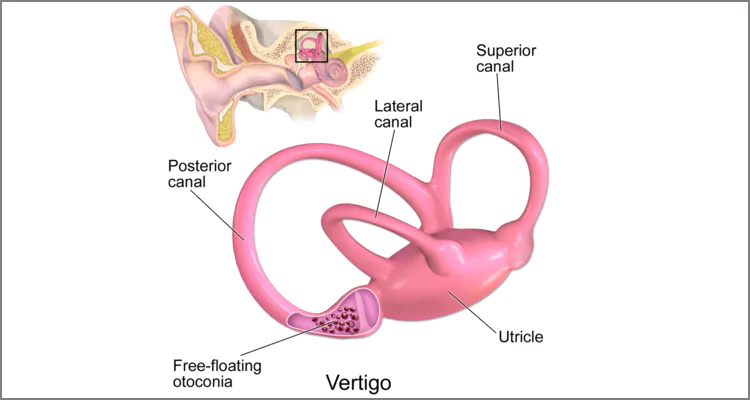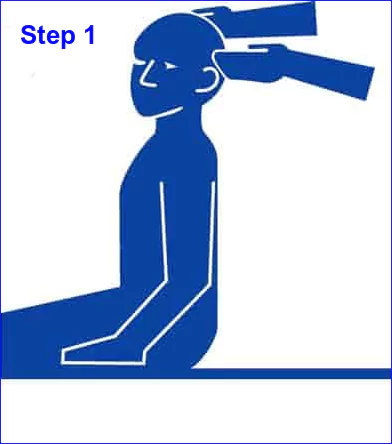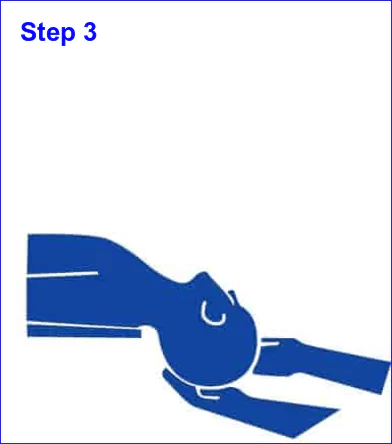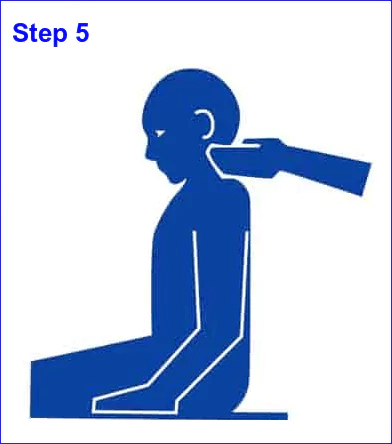Dizziness, spinning sensations, and loss of balance are symptoms of benign paroxysmal positional vertigo. If you experience BPPV, this may not be a new sensation for you. Your audiologist may have recommended the Epley Maneuver for vertigo as treatment for BPPV. The Epley Maneuver is a simple yet effective technique. This guide explores how the Epley method works and the science, technique, and benefits of the Epley procedure.
What Is the Epley Maneuver?
The Epley maneuver is a sequence of head and body movements devised to treat benign paroxysmal positional vertigo (BPPV). The procedure is performed to reposition the calcium carbonate crystals (canaliths) from the semi-circular canals to the utricle, where they originally belonged. The canalith repositioning procedure provides immediate relief from vertigo symptoms associated with BPPV. Read about BPPV in our article on Balance Disorders.
The sequence of head and body movements was devised by Dr. John Epley and is also known as the Epley repositioning maneuver or the canalith repositioning procedure1.
Vestibular System
The semi-circular canals and utricle are both part of the vestibular system and the inner ear’s organ of balance. They send precise information to the brain, which helps you to maintain balance and orientation.

The vestibular system consists of three loops known as semi-circular canals that contain fluids, and a sac known as the utricle that houses tiny calcium carbonate crystals known as canaliths. BPPV occurs when canaliths become detached from their normal location in the utricle and enter semi-circular canals2.
These crystals hinder the movement of fluids present in the canal, causing BPPV symptoms such as vertigo and balance issues.
Can I Do The Epley Maneuver At Home?
The biggest advantage for busy people is that relief from vertigo is possible with the Epley Maneuver at home. The Epley procedure at home is advisable after receiving proper instructions and guidance from your audiologist.
How To Do The Epley Maneuver At Home?
The Epley procedure or canalith repositioning procedure can be helpful in relieving vertigo caused by BPPV.
Important Note: The instructions below are general, and you can find many such instructions online. Do not attempt without consulting your healthcare professionals. Your doctor may provide specific customized steps.
To perform the Epley Maneuver step-by-step, follow the instructions below. Initially, you may require assistance, but you will be able to do it yourself after a few sessions3.
Epley Maneuver Step 1

Sit on a firm bed with your legs extended. Turn your head 45 degrees towards the affected ear. In the image above, the head is turned towards the left.
Epley Maneuver Step 2

While keeping your head at a 45-degree angle, quickly lower yourself down to lie with your head over the edge of the bed. Ensure that your head hangs slightly over the edge, positioned lower than the rest of the body.
This action may make you feel dizzy. Do not raise yourself and continue to maintain this position for 30 seconds.
Epley Maneuver Step 3

Gently turn your head without lifting it towards the other ear. Maintain this position for 30 seconds. Keep breathing normally throughout the procedure.
Epley Maneuver Step 4

Turn your body slowly so that it is in line with your head. Although your head will be in line with your body, it will continue to hang below the level of the bed. Remain in this position for some time.
Epley Maneuver Step 5

Raise yourself slowly and stay in this position for a few minutes.
You may observe immediate relief or reduced symptoms of BPPV after performing the Epley maneuver.
How Can You Tell Which Ear Is Causing Vertigo?
Your doctor can identify the affected ear after examination. The Dix-Hallpike test or Dix-Hallpike maneuver is the gold standard test used to diagnose BPPV.
A simple home test can also identify the affected ear, but it is not a substitute for professional diagnosis. The steps below are for information only.
Caution: Do not try the home test if you suffer from the following ailments:
cervical instability, acute neck trauma, cervical disc prolapses, and vascular problems, such as carotid sinus syncope, vascular dissection, and vertebrobasilar insufficiency.
Follow the steps below to identify the ear causing the vertigo.
- Sit on the bed with your legs extended. Position a set of pillows such that they are below your shoulders when you lie back.
- Turn your head 45 degrees in any one direction. If you turn your head towards the left, your left ear is under test.
- Lower yourself quickly with your head turned, the pillows should come under your shoulder, and your head reclined below the pillow level.
- Stay in this position for 30 seconds. Observe if you feel dizzy or experience involuntary eye movements.
- Raise yourself slowly and sit for some time, wait for dizziness to subside. Sit for a minute or two even if you do not experience dizziness.
- Repeat the steps with your head turned 45 degrees in the other direction.
If you experience dizziness only when turning your head towards one side while lying down, that ear is possibly the affected ear and the source of your vertigo.
If you experience dizziness on both sides, it indicates BPPV in both ears or a different cause of vertigo.
Note: While this test can be performed at home, it should be performed under the supervision of a healthcare professional to ensure safety and accuracy.
How Many Times A Day Should You Do the Epley Maneuver?
Your doctor’s opinion regarding the frequency of the Epley Maneuver is important, as it depends on the severity of BPPV.
However, the general recommendation is that the Epley Maneuver should be done three times a day. Your doctor may recommend three times before sleeping so that crystal repositioning is successful during the rest period.
Depending on the severity of BPPV, your doctor may recommend two to three sessions a day, with each session consisting of two or three repetitions of the Epley Maneuver.
You should continue these maneuvers until your vertigo symptoms have been absent for 24 hours or as per your healthcare professional’s advice.
Why Do I Still Have Vertigo After Epley Maneuver?
After undergoing the Epley Maneuver, you may still experience residual dizziness or vertigo, the possible reasons are as follows:
- It is possible that the crystals did not fully move back to their proper location in the utricle. Sometimes, multiple repetitions of the maneuver or a slightly modified technique may be needed for complete success.
- It can take some time for your brain to adjust to the change. This can lead to mild dizziness or a feeling of imbalance for a day or two after the Epley procedure.
- The Epley Maneuver for vertigo is effective only for BPPV. If vertigo is caused by migraines, inner ear infections, or medications, this maneuver will not help.
The Epley Maneuver is a simple yet effective treatment that can be performed at home under the guidance of a health care professional. With little patience and perseverance, the Epley Maneuver can help you recover from BPPV and resume your daily activities.
References:




